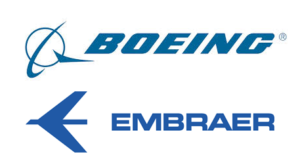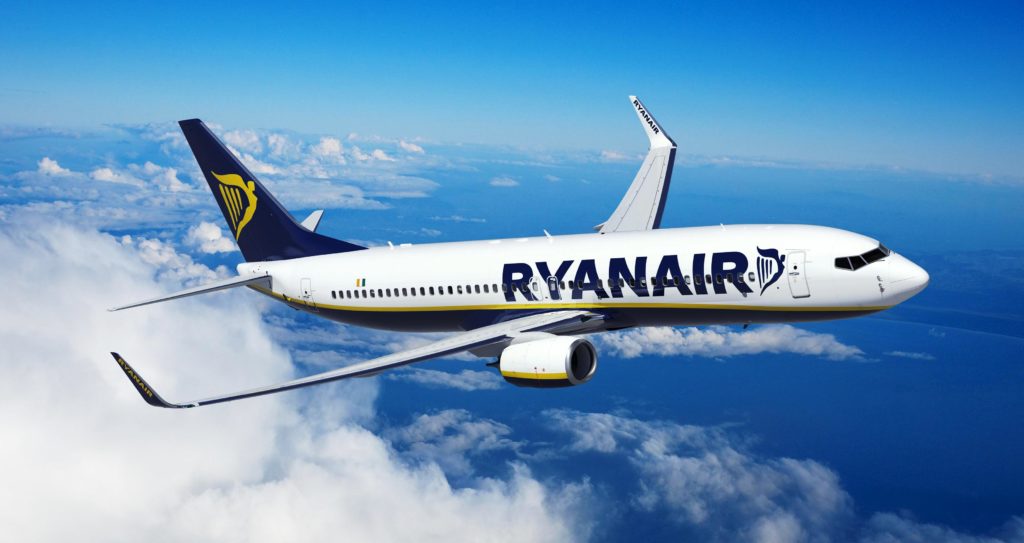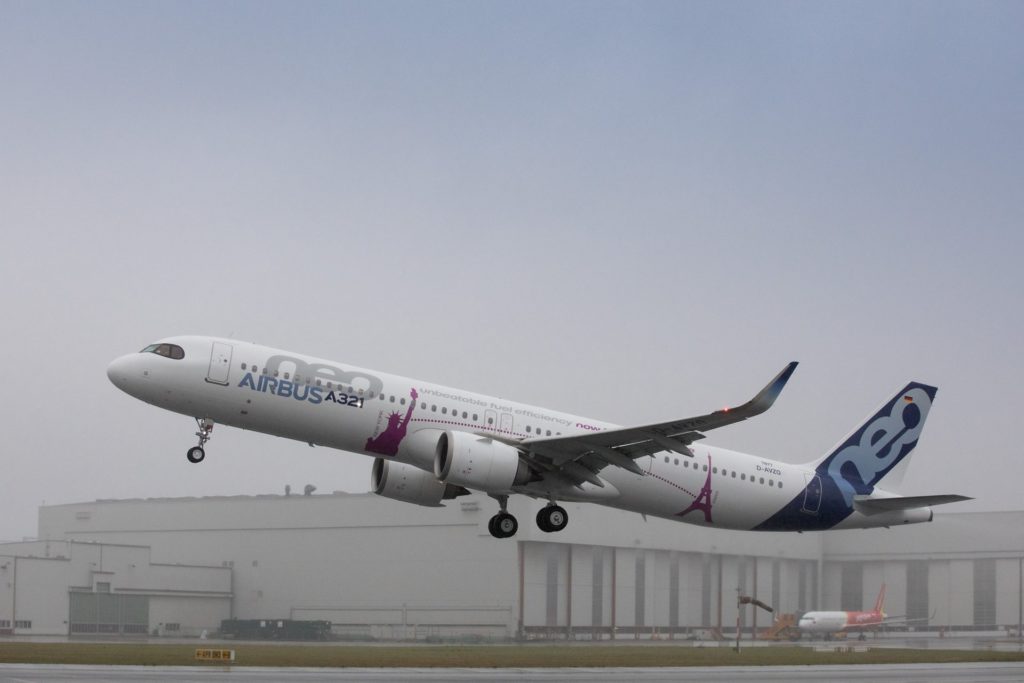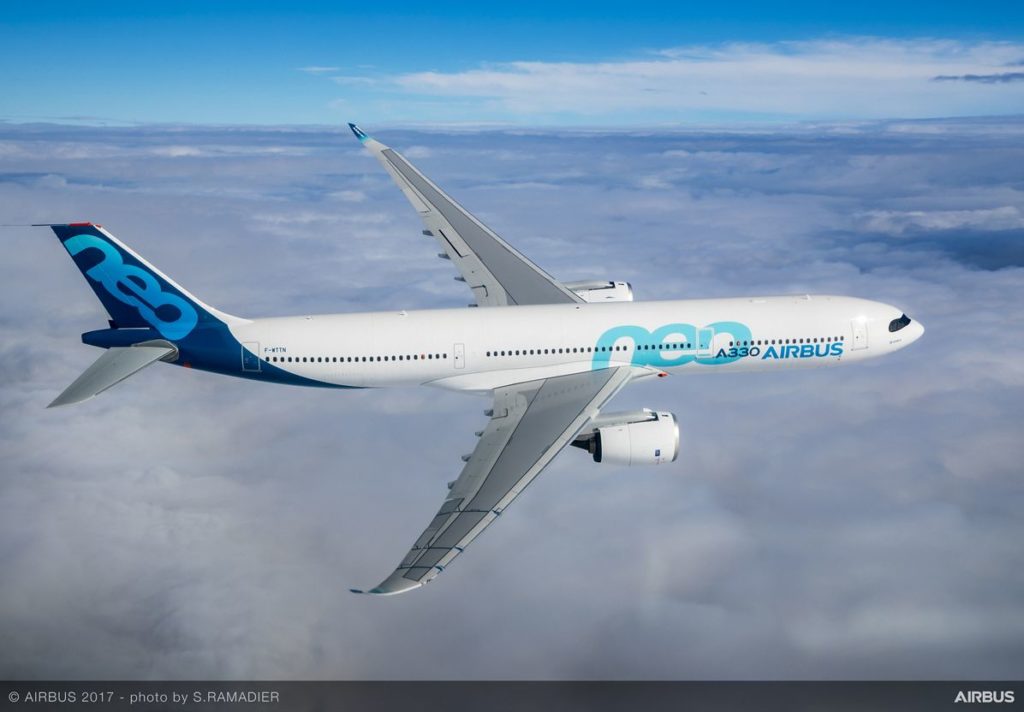Leeham News and Analysis
There's more to real news than a news release.
 Leeham News and Analysis
Leeham News and Analysis
- Airbus 1Q2024 results: Airbus CEO: “A350 in-service experience drives positive reputation and orders” April 25, 2024
- A350-1000 or 777-9? Part 3 April 25, 2024
- Boeing CEO promises company is turning around…again April 24, 2024
- Solid start for stand-alone GE Aerospace despite cuts to LEAP output April 23, 2024
- SPEEA, Boeing at impasse over safety program, union says April 23, 2024
With a month to elections, Embraer bolsters backlog
Subscription Required
Introduction
Sept. 10, 2018, © Leeham News: With the Brazilian elections less than a month away, the outcome of the presidential race will determine whether the proposed joint venture between Embraer and Boeing will be approved.
 Embraer is Brazil’s most visible and prestigious international company. The government has a “golden share,” giving it veto power over certain transactions, including the Boeing deal. Boeing will own 80% of the new JV that will be for EMB’s commercial business only. Embraer will own 20%.
Embraer is Brazil’s most visible and prestigious international company. The government has a “golden share,” giving it veto power over certain transactions, including the Boeing deal. Boeing will own 80% of the new JV that will be for EMB’s commercial business only. Embraer will own 20%.
The incumbent government says it will approve the joint venture; the opposition party says it will veto the deal.
Summary
Including orders, options and LOIs:
- Production slots are oversold through 2023.
- The skyline quality has some challenges.
- Only three dozen firm orders were announced at Farnborough; the balance has to be firmed up.
Posted on September 10, 2018 by Scott Hamilton
What costs dominate an airliner’s operation?
By Bjorn Fehrm
Subscription Required
Introduction
September 6, 2018, © Leeham News.: Last month we put the question if rising fuel prices will revitalize new aircraft sales. We now continue the analysis of an airliner’s costs by looking at other parts of the cost equation.
Is fuel the dominant operational cost also in the future? What’s the difference in the different costs between a legacy carrier and an LCC? We use our aircraft cost model to gain more insights.
Summary:
- To compare costs for an airliner’s operation we must distinguish between carrier types and geographies
- While keeping the modelling relatively simple, it will be possible to single out the cost drivers beside fuel and understand their importance
Posted on September 6, 2018 by Bjorn Fehrm
Suppliers chafe at Boeing’s demand for costly certifications
Subscription Required
Introduction
danieljcatchpole(at)gmail(dot)com
September 3, 2018, © Leeham News: Boeing’s insistence that more and more subcontractors meet stringent  aerospace manufacturing standards risks adding cost and reducing flexibility to the supply chain, several direct and indirect Boeing suppliers tell LNC.
aerospace manufacturing standards risks adding cost and reducing flexibility to the supply chain, several direct and indirect Boeing suppliers tell LNC.
The aerospace giant is requiring more second and third tier suppliers have AS9100 certification. Until recent years, OEMs and their direct suppliers typically were the only companies that formally complied with AS9100.
Subcontractors were expected to conform to the standards, but did not have to formally comply with the requirements. Doing so is expensive and time consuming. Subcontractors’ work was covered by the Tier 1 suppliers’ or Boeing’s AS9100 certification.
The AS9100 standards were adopted in the late 1990s to improve and standardize quality management throughout the increasingly global aerospace industry.
Summary
- Boeing pushing more subcontractors to be AS9100 certified, according to suppliers.
- That risks adding cost and reducing flexibility in supply chain.
- Some suppliers worry it’s a prelude to more cost cutting.
Posted on September 3, 2018 by Dan Catchpole
The Muddle of the Market aircraft (No, this isn’t a typo)
Subscription Required
Introduction
Aug. 30, 2018, © Leeham News: As time goes by, the Middle of the Market airplane appears to have  become the Muddle of the Market.
become the Muddle of the Market.
Boeing can’t seem to close the business case on its Middle of the Market airplane, the New Midmarket Aircraft, or NMA.
And Airbus continues to stir the pot with talk of an A321XLR and the ever-present A321neo Plus.
Summary
- Boeing’s been talking about the MOM for six years—an extraordinarily long time.
- The aircraft evolved from a 757 replacement to a 767 replacement—something the 787 was billed to be.
- The business case remains unclear.
- The Airplane definition is still a matter of debate.
- The MOM was defined by Boeing as above the 737-9 and below the 787-8—but now there’s the 737-10 at the small end, for capacity, and renewed interest in the 787-8 at the upper end.
- Airbus is pushing the A321LR and nearing a decision whether to proceed with the A321XLR.
- Engine makers remain cool to the NMA.
- The supply chain is unenthused about the NMA because Boeing wants to capture the aftermarket and hold the intellectual property rights.
- The supply chain is in melt-down.
Other than this, everything is fine.
Posted on August 30, 2018 by Scott Hamilton
Additive manufacturing: Huge potential, big barriers
Subscription Required
Introduction
Part 1 appears here.
By Dan Catchpole
August 27, 2018, © Leeham News: For all its potential, additive manufacturing faces significant hurdles before it can deliver on advocates’ assertions that the technology will revolutionize the aerospace industry.
 United Technologies is counting on additive manufacturing, often called 3D printing, to help it develop and produce new components faster, better and cheaper. Paula Hay is leading the expansion of additive manufacturing at United Technologies Aerospace Systems (UTAS). In part two to last week’s interview with Hay, LNC talks to her about what problems have to be solved for additive manufacturing (AM) to make good on its potential.
United Technologies is counting on additive manufacturing, often called 3D printing, to help it develop and produce new components faster, better and cheaper. Paula Hay is leading the expansion of additive manufacturing at United Technologies Aerospace Systems (UTAS). In part two to last week’s interview with Hay, LNC talks to her about what problems have to be solved for additive manufacturing (AM) to make good on its potential.
Summary
- Need more consistent materials and equipment.
- OEMs and regulators have to develop AM standards.
- Design culture has to evolve to reflect AM capabilities.
Can an Airbus A321XLR kill NMA’s business case? Part 2
By Bjorn Fehrm
Subscription Required
Introduction
August 23, 2018, © Leeham News.: Last week we examined the areas which limit the capabilities of the Airbus A321LR from addressing a larger part of what is called the Middle of the Market or the NMA segment.
We now discuss the changes Airbus can do which would make an A321XLR cover more of an NMA space.
- The A321LR needs more fuel tankage to fly longer.
- Installing Additional Center Tanks, (ACTs) takes away critical luggage space and increases the aircraft’s empty weight.
- We explore other ways around the problem and what these bring.
Posted on August 23, 2018 by Bjorn Fehrm
UTC Aerospace Systems sees big benefits from additive manufacturing
Subscription Required
Introduction
By Dan Catchpole
August 20, 2018, © Leeham News: There is a fundamental tension in aerospace’s DNA.

UTC Aerospace Systems’ executive Paula Hay is leading the aerospace supplier’s adoption of additive manufacturing. (Image via LinkedIn)
It has been there since Kitty Hawk: Balancing the hunger to push technological boundaries with the desire to stay safe.
The Wright Flyer only flew after years of painstakingly testing airframes and engines. That tension between being bold and being safe is evident today in commercial aerospace’s adoption of additive manufacturing.
Just about every major player in the aerospace industry is exploring additive manufacturing, or 3D printing. Most of the integration has been at the margins. The technology is still young enough that there is no clear leader in its application to aerospace. Everyone is trying to find how to get the most from it.
Summary
- Begin with mechanical, not structural systems.
- Big parts reductions.
- Big reduction in lead time.
Posted on August 20, 2018 by Dan Catchpole
Can an Airbus A321XLR kill NMA’s business case?
By Bjorn Fehrm
Subscription Required
Introduction
August 16, 2018, © Leeham News.: Airbus is working on improving the A321LR so it can fly more of the missions Boeing’s NMA is aimed for, according to Aviation Week. By it, Airbus could ideally make the NMA business case a No-Go.
To understand how much of the NMA market an A321XLR can address we need to understand the limitations of the A321LR and what can be done about them. And how fast such improvements could be implemented.
Summary:
- The A321LR is limited in both Take-Off Weight and fuel capacity to fly further than today’s aircraft.
- How to lift these limitations without imposing large changes is the subject of this week’s article and a follow-up article next week.
Airbus Business Line Services ramping up
Subscription Required
Introduction
Aug. 13, 2018, © Leeham News: While Boeing aggressively pushes its new business unit, Boeing Global Services (BGS), on a trajectory for a $50bn revenue target  in 10 years, Airbus quietly has its own services operation.
in 10 years, Airbus quietly has its own services operation.
Airbus services has a goal to reach $10bn in revenue over the next decade for its commercial services. In 2017, the Airbus Group revenue of $9bn was split roughly evenly between commercial, helicopters and defense.
BGS’ revenue target includes all services.
Unlike BGS, Airbus services are not a separate business unit/profit center. Ironically, the Airbus website describes the airliner-part as “commercial aircraft services.” Boeing’s airliner services operation was called Commercial Aviation Services, or CAS, before CAS merged with the Boeing defense operation to form BGS. The business line is promoted as Services by Airbus in collateral material.
Posted on August 13, 2018 by Scott Hamilton
Will rising fuel prices revitalize new aircraft sales? Part 2
By Bjorn Fehrm
Subscription Required
Introduction
August 9, 2018, © Leeham News.: We continue last week’s article about how changing fuel prizes affects fleet plans. Last week we studied how long-term rising fuel prices will favour new, more fuel-efficient single-aisle aircraft.
Now we make the analysis with Widebody aircraft in the segment 250 to 300 seats.
Summary:
- The crossover fuel price where a new generation Widebody is a good investment is slightly different than for the Narrowbody.
- As for the Narrowbody, the maintenance costs for a half-life Widebody and how these are handled influence the crossover fuel price.
Posted on August 9, 2018 by Bjorn Fehrm
Email Subscription
Twitter Updates
My TweetsAssociations
Aviation News-Commercial
Commentaries
Companies-Defense
Resources
YouTube
Archives
- April 2024
- March 2024
- February 2024
- January 2024
- December 2023
- November 2023
- October 2023
- September 2023
- August 2023
- July 2023
- June 2023
- May 2023
- April 2023
- March 2023
- February 2023
- January 2023
- December 2022
- November 2022
- October 2022
- September 2022
- August 2022
- July 2022
- June 2022
- May 2022
- April 2022
- March 2022
- February 2022
- January 2022
- December 2021
- November 2021
- October 2021
- September 2021
- August 2021
- July 2021
- June 2021
- May 2021
- April 2021
- March 2021
- February 2021
- January 2021
- December 2020
- November 2020
- October 2020
- September 2020
- August 2020
- July 2020
- June 2020
- May 2020
- April 2020
- March 2020
- February 2020
- January 2020
- December 2019
- November 2019
- October 2019
- September 2019
- August 2019
- July 2019
- June 2019
- May 2019
- April 2019
- March 2019
- February 2019
- January 2019
- December 2018
- November 2018
- October 2018
- September 2018
- August 2018
- July 2018
- June 2018
- May 2018
- April 2018
- March 2018
- February 2018
- January 2018
- December 2017
- November 2017
- October 2017
- September 2017
- August 2017
- July 2017
- June 2017
- May 2017
- April 2017
- March 2017
- February 2017
- January 2017
- December 2016
- November 2016
- October 2016
- September 2016
- August 2016
- July 2016
- June 2016
- May 2016
- April 2016
- March 2016
- February 2016
- January 2016
- December 2015
- November 2015
- October 2015
- September 2015
- August 2015
- July 2015
- June 2015
- May 2015
- April 2015
- March 2015
- February 2015
- January 2015
- December 2014
- November 2014
- October 2014
- September 2014
- August 2014
- July 2014
- June 2014
- May 2014
- April 2014
- March 2014
- February 2014
- January 2014
- December 2013
- November 2013
- October 2013
- September 2013
- August 2013
- July 2013
- June 2013
- May 2013
- April 2013
- March 2013
- February 2013
- January 2013
- December 2012
- November 2012
- October 2012
- September 2012
- August 2012
- July 2012
- June 2012
- May 2012
- April 2012
- March 2012
- February 2012
- January 2012
- December 2011
- November 2011
- October 2011
- September 2011
- August 2011
- July 2011
- June 2011
- May 2011
- April 2011
- March 2011
- February 2011
- January 2011
- December 2010
- November 2010
- October 2010
- September 2010
- August 2010
- July 2010
- June 2010
- May 2010
- April 2010
- March 2010
- February 2010
- January 2010
- December 2009
- November 2009
- October 2009
- September 2009
- August 2009
- July 2009
- June 2009
- May 2009
- April 2009
- March 2009
- February 2009
- January 2009
- December 2008
- November 2008
- October 2008
- September 2008
- August 2008
- July 2008
- June 2008
- May 2008
- April 2008
- March 2008
- February 2008



